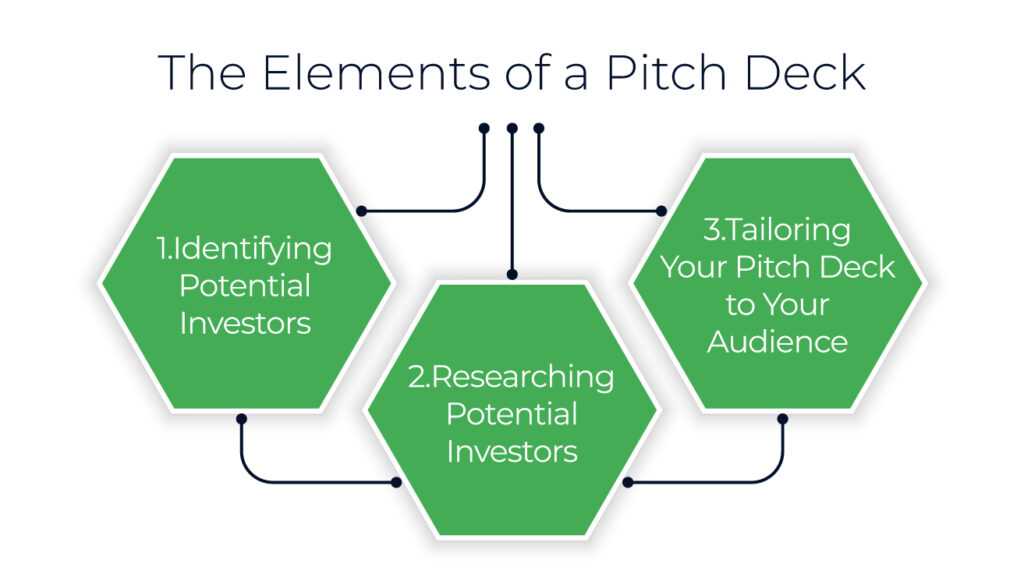Tips on How to End A Pitch Deck: Closing Strong in 2023
[read_meter]
If you want to know how to end a pitch deck strongly, you are in a good place!
As a business owner or entrepreneur, a well-crafted pitch deck is an essential tool in your arsenal. Whether you’re seeking investment from investors, trying to win over potential clients, or presenting your ideas to stakeholders, a pitch deck can significantly impact your chances of success. One crucial aspect of a pitch deck is the conclusion, and knowing how to end it in the right way is crucial for leaving a memorable impression on your audience. In this article, we will provide valuable insights and practical tips on how to effectively end your pitch deck with confidence, leaving a lasting impression that captivates your audience and helps you achieve your pitching goals. Let’s dive in and discover how you can close your pitch deck with confidence and leave a lasting impression on your audience.
What is a Pitch Deck?
In terms of end a pitch deck, you should know that the pitch deck first, it is a visual presentation that provides an overview of your business, product, or idea in a concise and visually appealing manner. It typically consists of a series of slides that highlight key points, visuals, and data to support your pitch. A pitch deck serves as a visual aid to help you communicate your message effectively and engage your audience.
The Elements of a Pitch Deck
To effectively craft a pitch deck that resonates with your target audience, it is essential to comprehend and tailor it according to their needs. Before you commence preparing your pitch deck, conduct thorough research to apprehend your audience’s persona, preferences, and requirements. This involves identifying and exploring potential investors such as venture capitalists, angel investors, crowdfunding platforms, and even acquaintances.

Also, you can read about pitch deck writing. It will teach you more about compelling storytelling in the pitch deck.
Identifying Potential Investors
To identify the best-suited investors, it is crucial to consider your funding requirements and the developmental stage of your business. For instance, if you are a pre-seed startup, angel investors or crowdfunding platforms may be an appropriate choice, while venture capitalists may be more suitable for later-stage startups. Also, the trust level in global financial services by investor type increased in the past 5 years.
Researching Potential Investors
In-depth research is paramount once you have identified potential investors. Delve into their investment background, the portfolio of companies they have invested in, and their areas of interest. This information will enable you to customize your pitch deck to cater to their specific interests and needs. Personalizing your pitch according to the investor’s preferences and using the research you’ve gathered can significantly increase your likelihood of securing funding.
Tailoring Your Pitch Deck to Your Audience
This concept involves creating a compelling narrative that addresses their specific interests and requirements. If, for instance, you have determined that the investor is keenly interested in environmentally friendly and sustainable products, ensure that your pitch deck highlights any eco-friendly features of your business. This includes emphasizing the materials you use, your manufacturing process, and the product certifications you have earned. Moreover, using the information you have researched to tailor your pitch deck according to the investor’s specific interests can make it more likely for you to secure funding.
Importance of End a Pitch Deck Strongly
End a pitch deck correctly is your last chance to convey your key messages, summarize your main points, and leave a lasting impression. A weak or abrupt end a pitch deck can leave your audience confused or uninterested, which may result in missed opportunities. On the other hand, a strong and memorable ending can leave your audience motivated and excited about your proposition. It’s crucial to plan and execute the ending of your pitch deck strategically to maximize its impact.
Continue reading to get the key features of end a pitch deck.
Ready to take your pitch deck to the next level and secure the funding you need to grow your business? Contact Easycapraise today, and let us help you find the right investors and fundraising opportunities to bring your vision to life.
Use a Powerful Call to Action
A call to action (CTA) is a critical element of any pitch deck ending. It’s the moment when you tell your audience what you want them to do next. Your CTA should be powerful, persuasive, and aligned with your overall pitch objective. Whether it’s asking for an investment, scheduling a follow-up meeting, or signing up for a free trial, make sure your CTA is clear, compelling, and easy to follow.
Tell a Compelling Story
Storytelling is a powerful technique to engage your audience emotionally and make your pitch memorable. As you approach the end of a pitch deck, consider telling a compelling story that relates to your proposition. This story could be a case study of a successful implementation, a testimonial from a satisfied customer, or a personal anecdote that illustrates the benefits of your proposition. Make sure your story is relevant, authentic, and resonates with your audience.
Address Potential Concerns
In any pitch, there may be potential concerns or objections that your audience may have. It’s essential to address these concerns head-on, especially during the closing of your pitch. By acknowledging and addressing potential objections, you show that you have thoroughly considered your proposition and have solutions in place. This builds trust and credibility with your audience. Anticipate potential concerns and prepare concise and convincing responses to address them during the closing of your pitch.
Offer a Memorable Closing Remark
End pitch deck should be memorable and impactful. It’s your last chance to leave a lasting impression on your audience. Consider using a memorable quote, a powerful statement, or a thought-provoking question that reinforces your key messages and resonates with your audience. Make sure your closing remark is authentic, aligned with your pitch objective, and leaves a lasting impression.
Use Visual Aids Effectively
Visual aids, such as slides, charts, and diagrams, can enhance the effectiveness of your end a pitch deck. Use visual aids strategically to support your key messages, summarize your main points, and make complex information more accessible and engaging. However, avoid overloading your pitch with too many visuals, as it can be distracting. Use visual aids sparingly and ensure they are visually appealing, easy to understand, and aligned with your overall pitch objective.
Practice and Rehearse (End a Pitch Deck)
End a pitch deck deserves as much attention as the rest of your presentation. Practice and rehearse the ending to ensure that you deliver it confidently, smoothly, and with the right tone and pace. Pay attention to your body language, tone of voice, and overall presence during the closing of your pitch. A well-rehearsed ending demonstrates your professionalism, confidence, and expertise, which can significantly impact your audience’s perception of your pitch.
Leave Room for Questions and Discussion
After delivering your closing remark, it’s important to leave room for questions and discussion. Encourage your audience to ask questions, share their thoughts, and engage in a conversation. This allows you to address any remaining concerns, provide further information, and deepen the engagement with your audience. Be attentive, responsive, and open to feedback during this discussion, as it shows your willingness to listen and collaborate.
Customize the Ending for Your Audience
Every pitch is unique, and it’s essential to customize the ending based on your specific audience. Consider the demographics, preferences, and interests of your audience when crafting the ending of your pitch. Tailor your key messages, language, and tone to resonate with your audience and make the pitch more relevant and compelling to them. This customization shows that you have taken the time to understand your audience’s needs and interests, and it can significantly impact their receptiveness to your pitch.
Common Mistakes to Avoid
In addition to the tips mentioned above, it’s important to be aware of common mistakes that can undermine the effectiveness of your pitch deck ending. Avoid the following pitfalls:
Rushing through the ending: Avoid rushing through the end a pitch deck. It’s a critical moment that deserves your full attention and should not be hurried.
Being too vague: Make sure your closing messages are clear, concise, and specific. Avoid being too vague or ambiguous, as it can leave your audience confused or uninterested.
Neglecting visual aids: If you use visual aids, ensure they are visually appealing, relevant, and aligned with your overall pitch objective. Neglecting visual aids or using them haphazardly can undermine the effectiveness of your pitch deck ending.
Overloading the audience with information: Be mindful of not overloading your pitch with too much information. Keep your closing messages focused, relevant, and easy to understand.
Neglecting audience engagement: The ending of your pitch is an opportunity to engage with your audience. Avoid neglecting audience engagement during the closing of your pitch and instead encourage questions, discussion, and feedback, and be responsive to your audience’s needs.
FAQS
1. How long should the ending of my pitch deck be?
End a pitch deck should be concise and to the point. Avoid dragging it out too long, and aim to keep it within a few minutes.
2. Should I include a call to action at the end of my pitch?
Including a call to action at the end of your pitch can be effective, depending on your objective. Make sure it’s relevant and aligned with your pitch’s overall message and goal.
3. How can I address potential objections at the end a pitch deck?
Be proactive in addressing potential objections during the ending of your pitch. Acknowledge and provide concise and convincing responses to potential concerns to build trust and credibility with your audience.
4. Is it necessary to use visual aids at the end a pitch deck?
Using visual aids can enhance the effectiveness of your pitch deck ending, but it’s not mandatory. Use visual aids strategically and ensure they are visually appealing, relevant, and aligned with your pitch’s overall objective.
5. How can I customize the end a pitch deck for my specific audience?
Consider the demographics, preferences, and interests of your audience when customizing the ending of your pitch. Tailor your key messages, language, and tone to resonate with your audience and make the pitch more relevant and compelling to them.
Conclusion
Overall, the end of a pitch deck is a crucial moment that can leave a lasting impression on your audience. By following these tips, you can effectively close your pitch and leave a positive impact on your audience. Remember to summarize your key messages, address potential objections, offer a memorable closing remark, use visual aids effectively, practice and rehearse the ending, leave room for questions and discussion, customize the ending for your audience, and avoid common mistakes. With a well-crafted and engaging ending, you can increase your chances of success and leave your audience impressed and interested in your proposition.
Related Articles
Contact us
Good to have you here! If you have any queries, please leave your message. Our team will reach out soon:)
.





